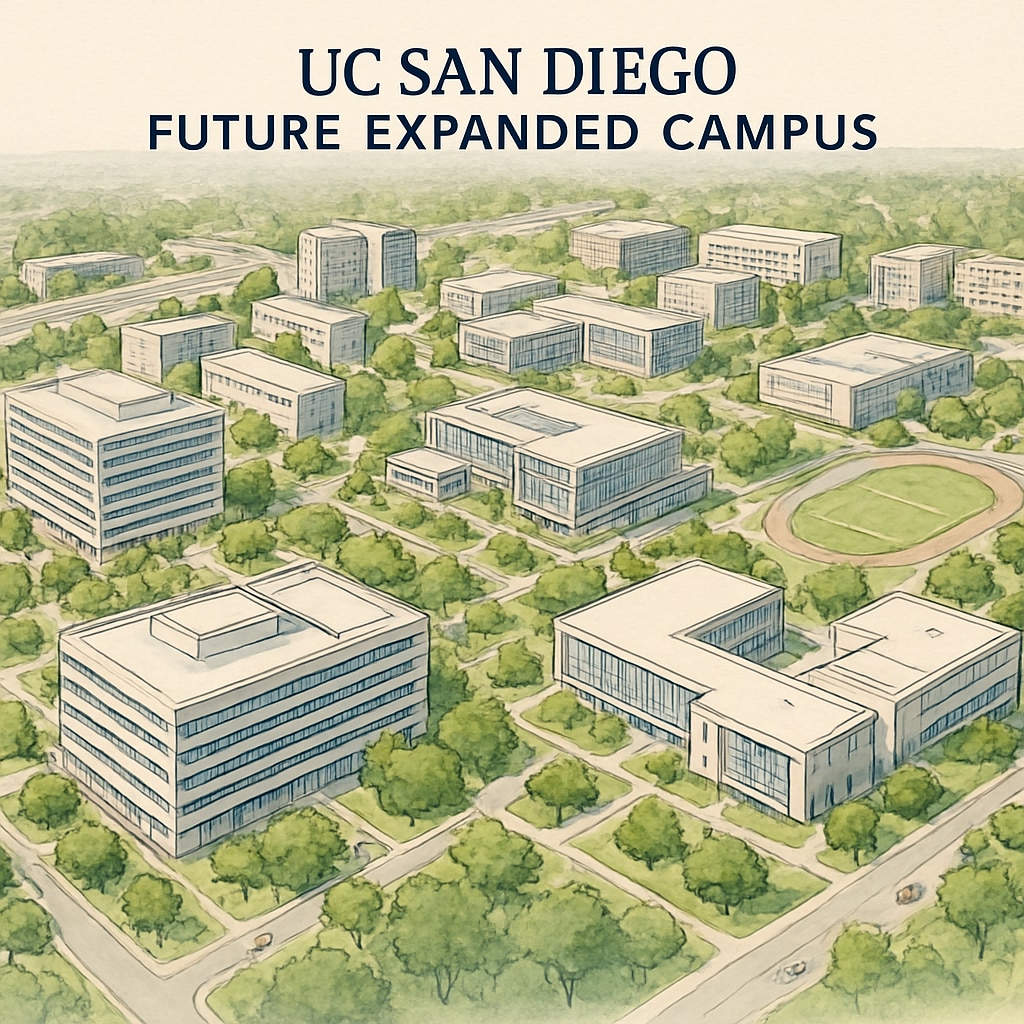UC San Diego’s ambitious enrollment expansion plan, targeting growth by 2040, is set to position the university as one of the largest and most influential institutions on the West Coast. This development promises transformative changes to the landscape of higher education, but it also brings significant challenges for the K-12 education system tasked with preparing a growing number of students for college readiness. As UC San Diego (UCSD) grows, the ripple effects will extend beyond its campus, influencing policies, resources, and strategies across all levels of education.
Breaking Down UC San Diego’s Enrollment Expansion Plan
UC San Diego’s enrollment expansion plan is nothing short of groundbreaking. The university has announced its intention to significantly increase its student population by 2040, aiming to accommodate tens of thousands more students. This initiative includes constructing new academic buildings, increasing faculty hiring, and expanding housing and student services to support the growing campus population. The plan is not only a response to the rising demand for higher education but also an effort to solidify UCSD’s position as a global educational powerhouse.
According to a comprehensive overview of UC San Diego, the institution has already gained recognition for its cutting-edge research and innovation. The enrollment expansion plan seeks to amplify this reputation while making higher education accessible to more students from diverse backgrounds. However, this growth raises a critical question: Are K-12 schools prepared to meet the demand for college-ready students?

The Impact on K-12 Education: Opportunities and Challenges
While UC San Diego’s enrollment expansion offers opportunities for more students to access high-quality education, it also places immense pressure on K-12 education systems. To meet the demand for college-ready graduates, K-12 schools must address several challenges, including curriculum alignment, teacher shortages, and resource allocation. This is particularly important in light of California’s already strained public education system.
Key challenges include:
- Curriculum Alignment: Ensuring that K-12 curricula prepare students for the academic rigor of institutions like UC San Diego.
- Equity in Access: Addressing disparities in educational resources across urban, suburban, and rural areas.
- Teacher Recruitment: Attracting and retaining skilled educators to meet the growing demand for high-quality instruction.
However, the expansion also presents opportunities. For example, partnerships between UC San Diego and local K-12 schools could create innovative programs, such as dual-enrollment courses and STEM-focused initiatives. These collaborations could serve as models for other regions facing similar challenges.

Preparing for the Future: Recommendations and Insights
To capitalize on UC San Diego’s enrollment expansion, policymakers and educators must adopt a proactive approach. Key recommendations include:
- Strengthening K-12 and Higher Ed Collaboration: Developing partnerships between universities and school districts to create seamless educational pathways.
- Investing in Teacher Training: Providing professional development programs to equip teachers with the skills needed to prepare students for college.
- Expanding Access to Resources: Ensuring that all schools have the tools and technology necessary to support student success.
- Focusing on Equity: Implementing policies that address systemic inequities in education, particularly for underserved communities.
As UC San Diego continues to grow, the success of its enrollment expansion will depend on the ability of the K-12 system to adapt and innovate. By addressing these challenges head-on, California can create a more equitable and effective education system that benefits students at all levels.
Concluding Thoughts: A Shared Responsibility
UC San Diego’s enrollment expansion is a bold step toward meeting the growing demand for higher education. However, its success will hinge on the readiness of the K-12 education system to produce students who are prepared to thrive in college. This shared responsibility between higher education and K-12 schools underscores the need for collaboration, investment, and innovation. By working together, educators and policymakers can ensure that the promise of this expansion benefits not only UC San Diego but also the broader educational ecosystem.
Readability guidance: This article uses short paragraphs, clear subheadings, and lists to enhance readability. Transition words such as “however,” “therefore,” and “for example” provide logical flow, while active voice is prioritized to maintain engagement.


